Best Arc Welder for the Money 2024
- February 12, 2024
- 0 comment
In the world of metal fabrication, having the right tools isn’t just about getting the job done; it’s about crafting a masterpiece that stands the test of time. My journey to find the perfect arc welder was not just a mission; it was a quest to discover a tool that could match the precision of my aspirations and the durability of my projects.
We’ve got your welding covered! Find comfy, Best welding gloves, Best welding carts, plus top picks for Best TIG Welder & Best MIG Welder – all without breaking the bank!
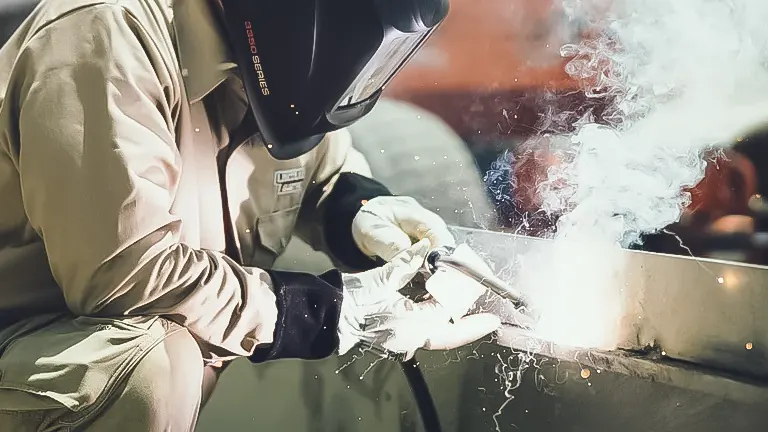
After countless hours of research, hands-on testing, and discussions with fellow enthusiasts, I’ve compiled my experiences and insights into this comprehensive review of the best arc welders on the market. Whether you’re a seasoned professional or a passionate hobbyist, I hope my journey can light the way to finding your perfect welding partner.
List of Best Arc Welder:
- AHP AlphaTIG 203Xi Arc Welder
- Miller Electric Maxstar 150 STL
- Lincoln Electric Powermig 210 MP
- Forney Easy Weld 298 Arc Welder 100ST
- Lincoln Electric K2278 1 Handy Core
The Quest Begins for Understanding User’s Needs
Before starting my search for the right arc welder, I took some time to clearly define my requirements. My work involves both artistic metal sculpture and practical repair tasks, which means I need a highly versatile welder. It’s essential for the welder to handle different types of metals and a range of thicknesses without complication.
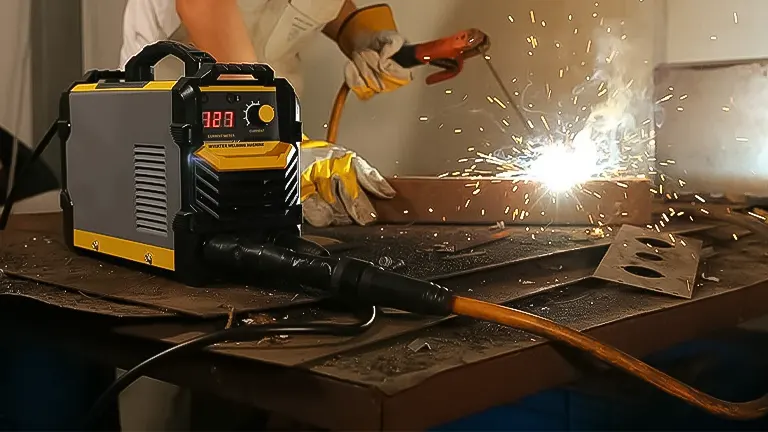
I was looking for a welder that was easy to use, especially when switching between creative projects and repair jobs, but also durable enough to manage tougher tasks. The ideal welder would offer precise control for detailed artistic work and the robustness needed for repairs.
Essentially, I needed a welder that could serve dual purposes: artistic precision and practical durability. This balance was crucial in my decision-making process, leading me to look for a machine that could support both aspects of my work effectively.
Top 5 Contenders on the Market
After sifting through specifications, user reviews, and expert opinions, I narrowed down my choices to a few top contenders, each known for their unique strengths and capabilities.
1. AHP AlphaTIG 203Xi Arc Welder
Technical Specifications
- Manufacturer: AHP
- Item Model Number: Alpha-TIG200X-2018
- Part Number: Alpha-TIG201XD
- Color: Yellow
- Material: Stainless Steel
- Item Weight: 69 pounds
- Product Dimensions: 19 x 23 x 12 inches
- Power Source: AC
The AlphaTIG 203Xi has emerged as a standout choice for welders seeking unmatched versatility and precision in their work. Designed to accommodate both TIG and stick welding, this machine is exceptionally well-suited for a wide range of projects, from intricate artistic creations to robust repair tasks. What sets the AlphaTIG 203Xi apart is its capability to operate effectively at both low and high amperages.
This feature is particularly beneficial for artists and craftsmen who frequently work with delicate, thin materials; the low amperage settings minimize the risk of damage by preventing burn-through, ensuring the integrity of the piece being worked on. Conversely, when dealing with thicker materials, the welder’s high amperage settings come into play, providing the necessary power to achieve deep, strong welds without compromising on the quality of the finish.
This adaptability is further enhanced by the machine’s digital display and intuitive controls, which simplify the process of making precise adjustments. As a result, users can spend more time concentrating on their craft, secure in the knowledge that the AlphaTIG 203Xi will deliver consistent, reliable results across a variety of welding tasks, making it an invaluable tool in any workshop.
Pros AHP AlphaTIG 203Xi
- Versatility: Handles both TIG and stick welding across various materials, ideal for diverse projects.
- Control: Advanced features like pulse modulation offer precise control for quality welds.
- Durability: Robust build quality ensures longevity, even with heavy use.
Cons AHP AlphaTIG 203Xi
- Learning Curve: Its advanced features may be daunting for beginners.
- Cost: Higher price point might not fit all budgets, especially for hobbyists.
- Portability: Heavier and bulkier, making it less ideal for those needing a portable welder.
2. Miller Electric Maxstar 150 STL
Technical Specifications
- Input Voltage: 115/230 V, Auto-Line
- Amperage Range: 5A to 150A (TIG), 20A to 150A (Stick)
- Max Open Circuit Voltage: 90 VDC
- Weight: Approximately 13.7 lbs (6.2 kg)
- Dimensions: 9 in x 5.5 in x 13.25 in (229 mm x 140 mm x 337 mm)
- Power Source: AC/DC
- Duty Cycle: 30% at 150A (TIG), 35% at 70A (Stick)
The Miller Electric Maxstar 150 STL stands out for its exceptional balance of portability and performance, making it a top choice for professionals and hobbyists who require mobility in their welding equipment. With a weight of just 13.2 pounds, it’s notably easy to transport, facilitating on-site repairs and projects in various locations without the burden of heavy lifting.
This lightweight design does not sacrifice power; the Maxstar 150 STL offers robust welding capabilities across both TIG and stick welding modes, allowing users to achieve precise and clean welds on different types of metals.
Its user-friendly interface supports quick transitions between welding modes, enhancing its versatility and making it suitable for a wide range of applications. This combination of features ensures that the Maxstar 150 STL is a reliable tool for those who need both the convenience of a portable welder and the reliability of a powerful welding machine.
Pros of Miller Electric Maxstar 150 STL
- Portability: Extremely lightweight at 13.2 pounds, making it easy to carry for on-site jobs.
- Versatility: Offers both TIG and stick welding, suitable for various metal types.
- Powerful: Despite its compact size, it delivers strong and precise welds.
Cons of Miller Electric Maxstar 150 STL
- Cost: May be considered expensive compared to some entry-level models.
- Learning Curve: Some users might find the switch between modes and settings a bit complex at first.
- Accessories: Limited accessories included, additional purchases may be necessary for specific tasks.
3. Lincoln Electric Powermig 210 MP
Technical Specifications
- Welding Processes: MIG, Flux-Cored, TIG, Stick
- Input Power: Dual Voltage 120V/230V
- Output Range: 20-220A (MIG), 20-220A (Stick), 10-200A (TIG)
- Wire Feed Speed Range: 50-500 ipm (1.3-12.7 m/min)
- Dimensions: 14 in x 10.75 in x 19 in (356 mm x 273 mm x 483 mm)
- Weight: 40 lbs (18 kg)
- Duty Cycle: 40% at 100A (120V), 25% at 200A (230V) for MIG
The Lincoln Electric PowerMIG 210 MP distinguishes itself with its ability to support multiple welding processes including MIG, TIG, and stick welding, which allows users to undertake a broad spectrum of welding tasks without the need for multiple specialized machines.
This multi-functionality transforms it into a comprehensive welding solution, streamlining operations in any workshop environment. Its design incorporates user-friendly digital controls and a color display, features that significantly ease the setup and adjustment processes.
These aspects not only expedite the preparation for welding tasks but also contribute to a more streamlined and less cumbersome user experience. By integrating such versatile capabilities and intuitive operation into a single unit, the PowerMIG 210 MP effectively addresses a wide range of welding needs, enhancing productivity and reducing equipment clutter.
Pros of Lincoln Electric PowerMIG 210 MP
- Multi-Process Capability: Supports MIG, TIG, Stick, and Flux-Cored welding, offering versatility for various projects.
- Ease of Use: Features intuitive digital controls and a color display for straightforward setup and adjustments.
- Portability: Compact and lightweight design at 40 lbs, making it easy to move around the workshop or take to job sites.
Cons of Lincoln Electric PowerMIG 210 MP
- Price: Higher upfront cost due to its advanced features and multi-process functionality.
- TIG Accessories: May require additional purchases for full TIG welding capabilities, as not all TIG components are included.
- Learning Curve: While user-friendly, beginners may need time to fully master all of its features and capabilities.
4. Forney Easy Weld 298 Arc Welder 100ST
Technical Specifications
- Brand: Forney
- Model: 298
- Power Source: Corded Electric
- Special Feature: TIG Capable
- Style: Arc Welder
- Item Weight: 13.74 pounds
- Product Dimensions: 16.25 x 8 x 12.5 inches
- Material: Metal
- Voltage: 120 Volts
- Amperage Capacity: 90 Amps
The Forney Easy Weld 298 Arc Welder 100ST is designed with practicality and durability in mind, catering primarily to residential users who require a reliable welding solution for light to medium tasks. Constructed from robust metal, it presents a sturdy exterior that withstands the typical rigors of a home workshop environment.
The compact and lightweight design, at just 13.74 pounds, enhances its portability, allowing users to move it effortlessly around their work area or transport it to different locations. Performance-wise, the welder operates on a 120-volt power source and delivers an amperage capacity up to 90 amps, sufficient for handling a variety of welding jobs on materials that are not excessively thick.
Its TIG capability, although requiring additional accessories not included, adds versatility to its functionality. However, the performance is optimized for stick welding, making it suitable for projects that fall within its amperage range. The 100ST model’s straightforward operational features, such as easy-to-use controls, make it accessible even to users with limited welding experience.
Pros
- Affordability: Offers great value for those on a tight budget without compromising on quality.
- Compact and Lightweight: At just under 14 pounds, it’s perfect for occasional use and small projects.
- Simplicity: With a single knob control, it’s incredibly straightforward to use, even for beginners.
Cons
- Power Output: Limited to 90 amps, making it unsuitable for thick materials or heavy-duty tasks.
- Duty Cycle: Similar to the Lincoln, its duty cycle necessitates breaks during extended welding sessions.
5. Lincoln Electric K2278-1 Handy Core
Technical Specifications
- Manufacturer: Lincoln Electric INC
- Model: K2278-1
- Item Weight: 45 pounds
- Product Dimensions: 8.82 x 17.99 x 12.8 inches
- Installation Method: MIG Welding
- Duty Cycle: 20% at 70 Amps
- Amperage Capacity: 88 amps
- Input Voltage: 115V
The Lincoln Electric K2278-1 Handy Core is engineered for durability and reliable performance, particularly in light to moderate welding tasks. Constructed to meet the needs of hobbyists and DIY enthusiasts, its robust metal frame and compact design underscore its build quality, designed to withstand the general wear and tear of workshop environments.
Weighing 45 pounds, it’s relatively portable within a workshop setting, though not as lightweight as some of its competitors. Performance-wise, it offers a practical welding solution with an 88 amp maximum output and a 20% duty cycle at 70 amps, making it suitable for small repairs and projects using thin materials. The 115V input voltage allows for compatibility with standard household outlets, enhancing its appeal for home use.
While its performance is solid for its intended use, the welder’s limitations in amperage output and duty cycle restrict its effectiveness to smaller scale projects, making it less suitable for heavy-duty or industrial applications. Overall, the K2278-1 Handy Core provides a balance between build quality and performance for users looking for a basic, no-frills welding tool for occasional use.
Pros
- User-Friendly: Ideal for beginners, with straightforward controls and an easy setup process.
- Portable: Lightweight design makes it a breeze to move around the workshop or take to on-site jobs.
- Versatile: Performs admirably on small repairs and basic projects on mild steel.
Cons
- Power Limitations: With a maximum output of 88 amps, it’s not suited for thick materials or industrial use.
- Duty Cycle: At 20%, it requires frequent breaks during prolonged use to prevent overheating.
Buying Guide: How to Choose the Best Arc Welder
In this comprehensive guide, we’ll explore how to select the best 120v MIG welders, focusing on key features and considerations.
Understanding Voltage
- Compatibility and Power Requirements: A 120V MIG welder is designed for household outlets, making it convenient for home use and light to medium fabrication tasks. Ensure your workspace has a compatible power outlet.
- Material Thickness: While 120V welders are versatile, they’re best suited for welding materials of mild thickness. They’re ideal for metals up to 1/4 inch thick, beyond which a higher voltage may be necessary for effective welding.
- Portability: Due to their voltage, these welders are typically more portable and lighter than their 220V counterparts. This makes them a good choice for those needing a welder that can be easily moved around a workshop or taken to different job sites.
Understanding the Duty Cycle
- Definition and Importance: The duty cycle of a welder refers to the amount of time it can operate at a given output without overheating, expressed as a percentage over a 10-minute period. For example, a 40% duty cycle at 90 amps means the welder can run for 4 minutes at 90 amps before it needs to cool down.
- Choosing Based on Usage: For light, occasional welding, a lower duty cycle may suffice. However, for more intensive or prolonged welding sessions, look for a welder with a higher duty cycle to avoid frequent stops for cooling.
- Impact on Productivity: A welder with a higher duty cycle can significantly increase productivity, especially for projects that require sustained welding.
Importance of Safety Features
- Thermal Overload Protection: This feature shuts down the welder automatically if it exceeds its maximum operating temperature, protecting the welder from damage and the user from potential accidents.
- Ventilation and Cooling Systems: Good ventilation and cooling systems help maintain optimal operating temperatures, ensuring the longevity of the welder and safety during operation.
- Grounding and Electrical Safety: Ensure the welder includes proper grounding mechanisms and is designed with built-in electrical safety features to prevent shocks and short circuits.
Wire-Feed Speed Considerations
- Control and Precision: The wire-feed speed affects how smoothly and consistently the welding wire is fed into the weld joint. Adjustable wire-feed speed allows for greater control and precision, accommodating different welding techniques and material thicknesses.
- Matching Speed with Material: It’s important to match the wire-feed speed with the material being welded. Too slow a feed can lead to an unstable arc and poor penetration, while too fast a feed can cause excess spatter and a weak weld.
- Ease of Adjustment: Look for a welder with an easily adjustable wire-feed speed setting. This will allow for quick changes between different types of projects, making your welding process more efficient and versatile.
When choosing a 120V MIG welder, considering these aspects will help you select a model that not only fits your specific welding needs but also ensures safety, efficiency, and adaptability in your welding projects.
Decision-Making Factors
When choosing the best arc welder, consider the following key factors based on my firsthand experience:
- Material Thickness: Ensure the welder can handle the thickness of the materials you’re working with.
- Duty Cycle: Look for a machine with a higher duty cycle if you plan to weld for extended periods.
- Portability: If you need to move your welder around frequently, prioritize lightweight and compact designs.
- Budget vs. Quality: Determine your budget but remember that investing in a higher-quality welder can save money and frustration in the long run.
Related Articles:
- First Welder Guide for DIYers: Practical Tips
- Best 5 MIG Welders: From Budget-Friendly to Premium Picks
- Best Black Friday Welding Machine Deals 2023
- Troubleshooting Common Welding Machine Problems
- Best Cheap MIG Welder on Amazon
- Best Yeswelder Plasma Cutter
- Best MIG Welder by YesWelder
- Best STICK Welder by YesWelder
- Best 110v MIG Welders
- Best 120V MIG Welders
Final Thoughts
Choosing the right arc welder boils down to understanding your specific needs, budget, and the types of projects you plan to undertake. My journey through selecting an arc welder highlighted the value of thorough research and firsthand testing to find a tool that matches my unique requirements. I encourage you to learn from my experience but ultimately select a welder that best suits your own work style and project challenges. Remember, the ideal welder for you is one that meets your specific needs and helps you achieve your goals efficiently. Happy welding!
Frequently Asked Questions
- What Is an Arc Welder?
An arc welder is a type of welding machine that uses an electrical arc to melt metals at the welding point. It can work with various welding processes, including Stick (SMAW), TIG (GTAW), and MIG (GMAW), depending on the model. - How Do I Choose the Right Arc Welder for My Needs?
Consider your primary welding tasks, the types of metals you’ll be working with, thickness ranges, and any specific features you need, such as portability or multi-process capability. Your budget and the welder’s power requirements are also crucial factors. - Can I Use an Arc Welder for Both Home and Professional Projects?
Yes, arc welders are versatile tools suitable for both home DIY projects and professional applications. The key is to select a model that matches the complexity and scale of your projects. - What’s the Difference Between AC and DC Arc Welders?
AC welders are generally more affordable and better for welding magnetic materials, while DC welders offer more stable arcs, less spatter, and better control, making them suitable for a wider range of materials and applications. - How Important Is Welder Amperage?
Welder amperage determines the maximum thickness of metal you can weld. Higher amperage welders can handle thicker materials. Consider the materials you plan to weld most often when choosing your welder’s amperage range. - Should I Get a Welder With Multi-Process Capabilities?
If you anticipate needing to perform different types of welding (e.g., Stick, MIG, TIG), a multi-process welder can be a cost-effective and space-saving choice, eliminating the need to purchase separate machines for each welding type. - What Safety Features Should I Look For in an Arc Welder?
Look for welders with built-in safety features like thermal overload protection, which prevents the machine from overheating, and a duty cycle that matches your typical welding duration to avoid overuse. - How Can I Ensure the Longevity of My Arc Welder?
Regular maintenance, including cleaning the welder, checking for wire and hose integrity, and ensuring proper storage, will help extend the life of your arc welder. Also, using the welder within its recommended duty cycle and amperage range can prevent wear and damage.
We’re eager to hear your story! Share your personal experiences and insights about the best arc welders you’ve encountered on your journey in the comments section below. Your valuable feedback could guide fellow enthusiasts in making well-informed decisions on their own quests for the perfect arc welder. Join the conversation and help build a community of informed welders!

Edward Smith
Forestry AuthorWoodworking is about more than crafting; it's a harmonious connection with nature, mastering tools, and preserving our environment. I'm here to share my knowledge and experiences with you, forging a future where we can embrace wood's beauty and utility while safeguarding our forests' health and diversity.

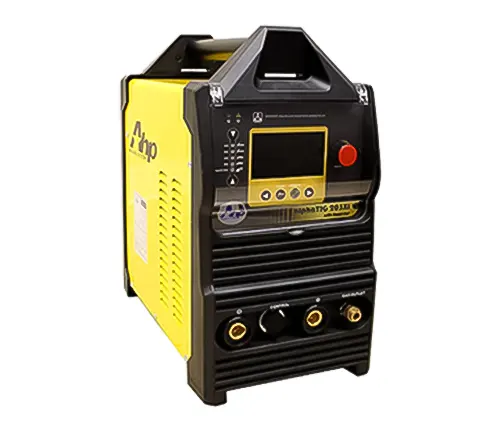
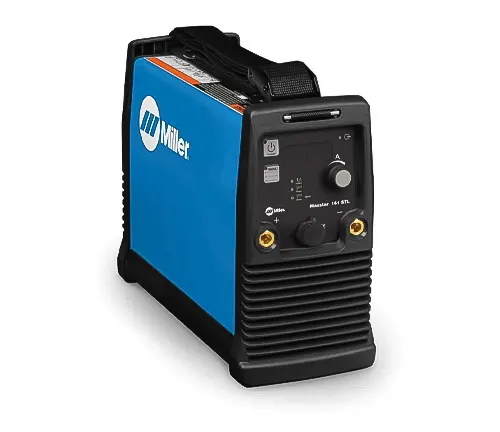
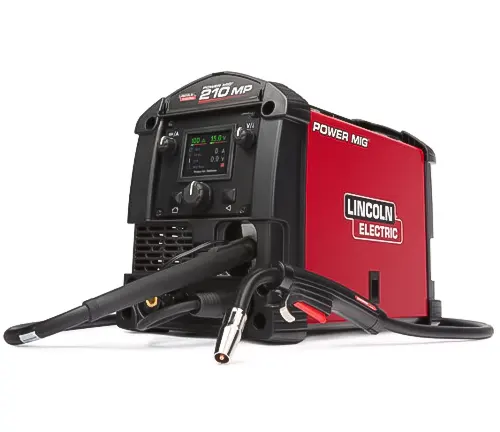
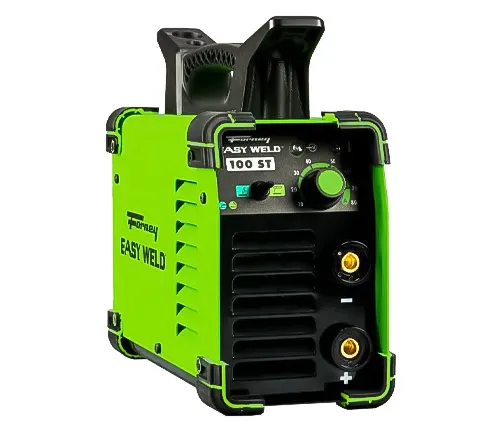
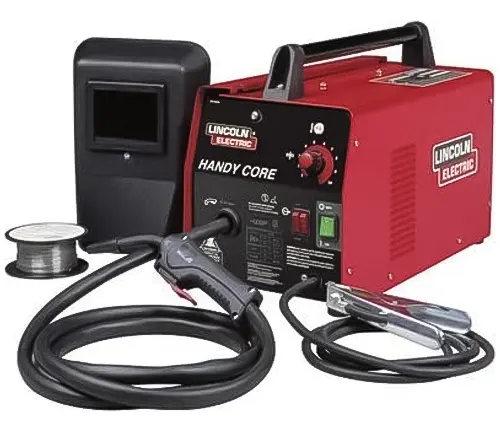







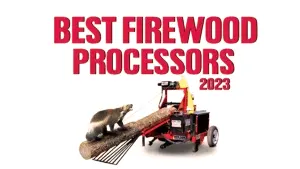


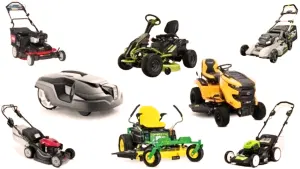

Leave your comment